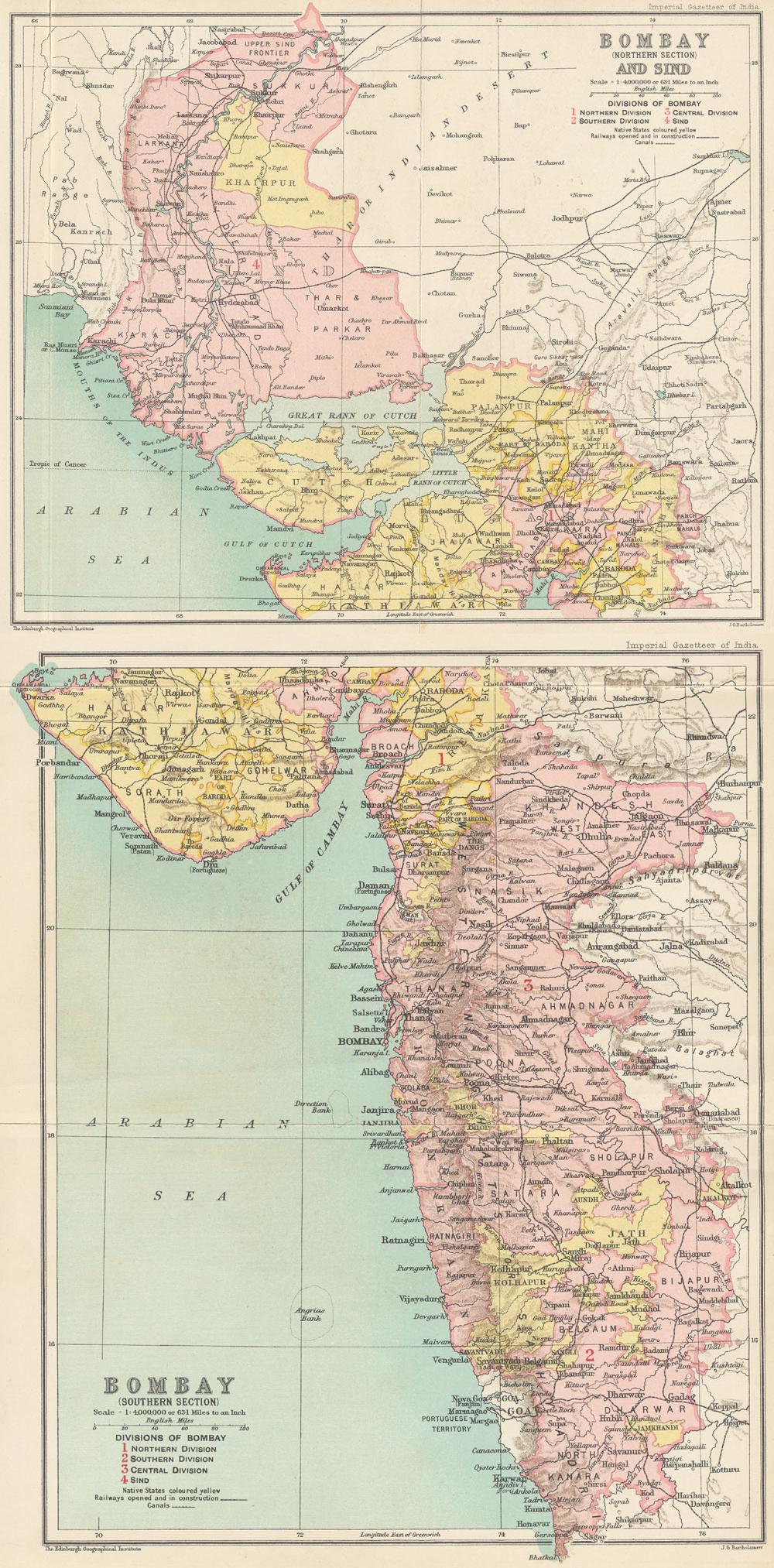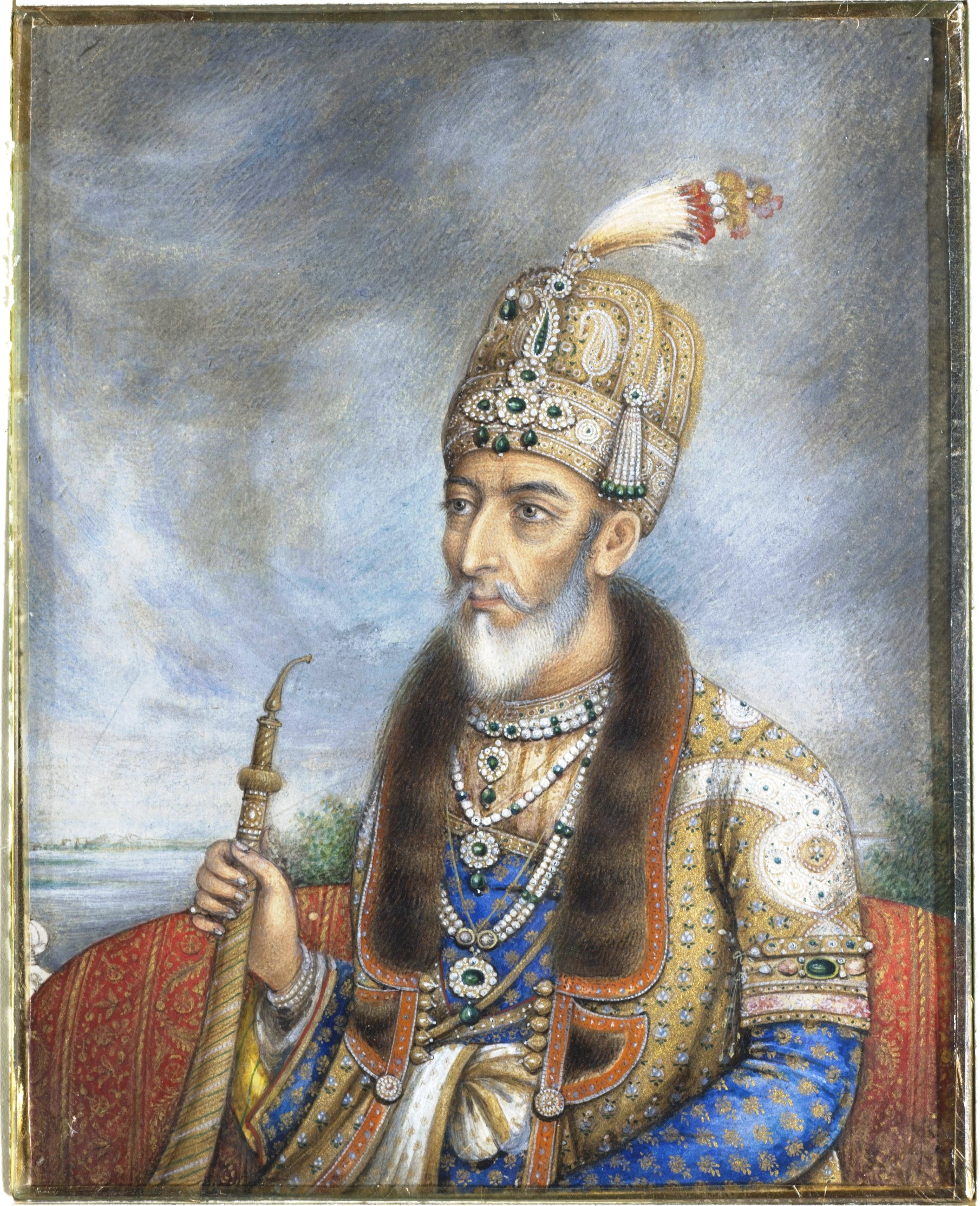|
Bombay State
Bombay State was a large Indian state created in 1950 from the erstwhile Bombay Province, with other regions being added to it in the succeeding years. Bombay Province (in British India roughly equating to the present-day Indian state of Maharashtra, excluding Marathwada and Vidarbha) was merged with the princely states of Baroda, Western India and Gujarat (the present-day Indian state of Gujarat) and the Deccan States (which included parts of the present-day Indian states of Maharashtra and Karnataka). On 1 November 1956, Bombay State was reorganised under the States Reorganisation Act on linguistic lines, absorbing various territories including the Saurashtra and Kutch States, which ceased to exist. On 1 May 1960, Bombay State was dissolved and split on linguistic lines into the two states of Gujarat, with Gujarati speaking population and Maharashtra, with Marathi speaking population. History During the British Raj, portions of the western coast of India under d ... [...More Info...] [...Related Items...] OR: [Wikipedia] [Google] [Baidu] |
Raja Maharaj Singh
Raja Sir Maharaj Singh (17 May 1878, Kapurthala, Punjab – 6 June 1959, Lucknow Lucknow () is the List of state and union territory capitals in India, capital and the largest city of the List of state and union territory capitals in India, Indian state of Uttar Pradesh and it is the administrative headquarters of the epon ...) was the first Indian List of Governors of Bombay, Governor of Bombay. He was also the Prime Minister of Jammu and Kashmir during Maharaja Hari Singh's rule and also the Dewan of Jodhpur for a short while. Raja Sir Maharaja Singh served as the president of the All India Conference of Indians in the 1940s. Life Maharaj Singh was the second son of Harnam Singh, Raja Harnam Singh of the Kapurthala State, Kapurthala royal family, a direct descendant of Jassa Singh Ahluwalia. His mother was Rani Priscilla Kaur Sahiba (née Priscilla Golaknath). Maharaj Singh's father, Harnam Singh, had converted to Christianity under the influence of his English tutor, ... [...More Info...] [...Related Items...] OR: [Wikipedia] [Google] [Baidu] |
Karnataka
Karnataka ( ) is a States and union territories of India, state in the southwestern region of India. It was Unification of Karnataka, formed as Mysore State on 1 November 1956, with the passage of the States Reorganisation Act, 1956, States Reorganisation Act, and renamed ''Karnataka'' in 1973. The state is bordered by the Lakshadweep Sea to the west, Goa to the northwest, Maharashtra to the north, Telangana to the northeast, Andhra Pradesh to the east, Tamil Nadu to the southeast, and Kerala to the southwest. With 61,130,704 inhabitants at the 2011 census, Karnataka is the List of states and union territories of India by population, eighth-largest state by population, comprising 31 List of districts in India, districts. With 15,257,000 residents, the state capital Bengaluru is the largest city of Karnataka. The economy of Karnataka is among the most productive in the country with a gross state domestic product (GSDP) of and a per capita GSDP of for the financial year 2023– ... [...More Info...] [...Related Items...] OR: [Wikipedia] [Google] [Baidu] |
Sind Province
Sindh ( ; ; , ; abbr. SD, historically romanized as Sind or Scinde) is a province of Pakistan. Located in the southeastern region of the country, Sindh is the third-largest province of Pakistan by land area and the second-largest province by population after Punjab. It is bordered by the Pakistani provinces of Balochistan to the west and north-west and Punjab to the north. It shares an International border with the Indian states of Gujarat and Rajasthan to the east; it is also bounded by the Arabian Sea to the south. Sindh's landscape consists mostly of alluvial plains flanking the Indus River, the Thar Desert in the eastern portion of the province along the international border with India, and the Kirthar Mountains in the western portion of the province. The economy of Sindh is the second largest in Pakistan after the province of Punjab; its provincial capital Karachi is the most populous city in the country as well as its main financial hub. Sindh is home to a l ... [...More Info...] [...Related Items...] OR: [Wikipedia] [Google] [Baidu] |
Partition Of India
The partition of India in 1947 was the division of British India into two independent dominion states, the Dominion of India, Union of India and Dominion of Pakistan. The Union of India is today the Republic of India, and the Dominion of Pakistan is the Islamic Republic of Pakistan and the People's Republic of Bangladesh. The Partition (politics), partition involved the division of two provinces, Bengal and the Punjab Province (British India), Punjab, based on district-wise Hindu or Muslim majorities. It also involved the division of the British Indian Army, the Royal Indian Navy, the Indian Civil Service, the History of rail transport in India, railways, and the central treasury, between the two new dominions. The partition was set forth in the Indian Independence Act 1947 and resulted in the dissolution of the British Raj, or Crown rule in India. The two self-governing countries of India and Pakistan legally came into existence at midnight on 14–15 August 1947. The partiti ... [...More Info...] [...Related Items...] OR: [Wikipedia] [Google] [Baidu] |
Indian Independence Movement
The Indian independence movement was a series of historic events in South Asia with the ultimate aim of ending British Raj, British colonial rule. It lasted until 1947, when the Indian Independence Act 1947 was passed. The first nationalistic movement took root in the newly formed Indian National Congress with prominent moderate leaders seeking the right to appear for Indian Civil Service examinations in British India, as well as more economic rights for natives. The first half of the 20th century saw a more radical approach towards self-rule. The stages of the independence struggle in the 1920s were characterised by the leadership of Mahatma Gandhi and Congress's adoption of Gandhi's policy of non-violence and Salt March, civil disobedience. Some of the leading followers of Gandhi's ideology were Jawaharlal Nehru, Vallabhbhai Patel, Abdul Ghaffar Khan, Maulana Azad, and others. Intellectuals such as Rabindranath Tagore, Subramania Bharati, and Bankim Chandra Chattopadhyay spr ... [...More Info...] [...Related Items...] OR: [Wikipedia] [Google] [Baidu] |
British Raj
The British Raj ( ; from Hindustani language, Hindustani , 'reign', 'rule' or 'government') was the colonial rule of the British The Crown, Crown on the Indian subcontinent, * * lasting from 1858 to 1947. * * It is also called Crown rule in India, * * * * or direct rule in India. * Quote: "Mill, who was himself employed by the British East India company from the age of seventeen until the British government assumed direct rule over India in 1858." * * The region under British control was commonly called India in contemporaneous usage and included areas directly administered by the United Kingdom of Great Britain and Ireland, United Kingdom, which were collectively called ''Presidencies and provinces of British India, British India'', and areas ruled by indigenous rulers, but under British British paramountcy, paramountcy, called the princely states. The region was sometimes called the Indian Empire, though not officially. As ''India'', it was a founding member of th ... [...More Info...] [...Related Items...] OR: [Wikipedia] [Google] [Baidu] |
Ramachandra Guha
Ramachandra "Ram" Guha (born 29 April 1958) is an Indian historian, environmentalist, writer and public intellectual whose research interests include social, political, contemporary, environmental and cricket history. He is an important authority on the history of modern India. The American Historical Association (AHA) has conferred its Honorary Foreign Member prize for the year 2019 on Ramchandra Guha. He is the third Indian historian to be recognised by the association. Covering a wide range of subjects, Guha has produced three major books of modern India's socio-political history. Among them, '' Gandhi Before India'' (2013) and '' Gandhi: The Years That Changed the World'' (2018), are the two volumes of biography of Mahatma Gandhi, an icon of the Indian independence movement. The other being '' India After Gandhi'' (2007), an account of the history of India from 1947 to 2007, which received commercial and critical success. He was appointed to BCCI's panel of administrato ... [...More Info...] [...Related Items...] OR: [Wikipedia] [Google] [Baidu] |
Marathi People
The Marathi people (; Marathi language, Marathi: , ''Marāṭhī lōk'') or Marathis (Marathi: मराठी, ''Marāṭhī'') are an Indo-Aryan peoples, Indo-Aryan ethnolinguistic group who are native to Maharashtra in western India. They natively speak Marathi language, Marathi, an Indo-Aryan languages, Indo-Aryan language. Maharashtra was formed as a Marathi-speaking state of India on 1 May 1960, as part of a nationwide linguistic reorganisation of the States and union territories of India, Indian states. The term "Maratha" is generally used by historians to refer to all Marathi-speaking peoples, irrespective of their Caste system in India, caste; However, it may refer to a Maharashtrian caste known as the Maratha (caste), Maratha which also includes farmer sub castes like the Kunbis. The Marathi community came into political prominence in the 17th century, when the Maratha Empire was established by Shivaji in 1674. Etymology According to R. G. Bhandarkar, the term Mara ... [...More Info...] [...Related Items...] OR: [Wikipedia] [Google] [Baidu] |
Marathi Language
Marathi (; , 𑘦𑘨𑘰𑘙𑘲, , ) is a Classical languages of India, classical Indo-Aryan languages, Indo-Aryan language predominantly spoken by Marathi people in the Indian state of Maharashtra and is also spoken in Goa, and parts of Gujarat, Karnataka and the territory of Dadra and Nagar Haveli and Daman and Diu. It is the official language of Maharashtra, and an additional official language in the state of Goa, where it is used for replies, when requests are received in Marathi. It is one of the 22 scheduled languages of India, with 83 million speakers as of 2011. Marathi ranks 13th in the List of languages by number of native speakers, list of languages with most native speakers in the world. Marathi has the List of languages by number of native speakers in India, third largest number of native ... [...More Info...] [...Related Items...] OR: [Wikipedia] [Google] [Baidu] |
Gujarati People
The Gujarati people, or Gujaratis, are an Indo-Aryan peoples, Indo-Aryan ethnolinguistic group who reside in or can trace their ancestry or heritage to a region of the Indian subcontinent primarily centered in the present-day western Indian state of Gujarat. They primarily speak Gujarati language, Gujarati, an Indo-Aryan language. While Gujaratis mainly inhabit Gujarat, they have a Gujarati diaspora, diaspora worldwide. Geographical locations Despite significant migration primarily for economic reasons, most Gujaratis in India live in the state of Gujarat in Western India. Gujaratis also form a significant part of the populations in the neighboring metropolis of Mumbai Metropolitan Region, Mumbai and union territory of Dadra and Nagar Haveli and Daman and Diu, formerly Portuguese Empire, colonial possessions of Portugal. There are very large Gujarati immigrant communities in other parts of India, most notably in Mumbai, Pune, Delhi, Kolkata, Chennai, Bangalore and other cities l ... [...More Info...] [...Related Items...] OR: [Wikipedia] [Google] [Baidu] |










